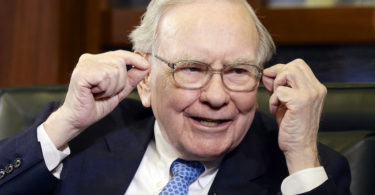MRUS Overview: Merus N.V. (NASDAQ: MRUS) is a Dutch oncology biotech specializing in Multiclonics – proprietary full-length human bispecific and trispecific antibodies ([1]). The company’s platform has yielded innovative antibody therapeutics, including its first FDA-approved drug, BIZENGRI® (zenocutuzumab-zbco), which gained accelerated approval in late 2024 for certain advanced pancreatic and lung cancers harboring NRG1 gene fusions ([2]). This niche therapy (licensed to Partner Therapeutics in the U.S.) addresses a rare patient population and carries a conditional approval pending confirmatory trials ([2]). However, Merus’s core value lies in its pipeline of multispecific antibodies – foremost among them petosemtamab (MCLA-158), a late-stage bispecific targeting EGFR and LGR5. Petosemtamab has shown remarkable early efficacy in head and neck squamous cell carcinoma (HNSCC), with a Phase 1/2 trial reporting a 63% tumor response rate and 79% one-year overall survival when combined with pembrolizumab (Keytruda) in first-line HNSCC ([3]). These unprecedented results, presented at ASCO 2025, earned petosemtamab two FDA Breakthrough Therapy designations (for both previously treated and first-line HNSCC) ([4]). Genmab’s CEO even touted petosemtamab’s potential to be “transformational” for head & neck cancer patients ([1]). Beyond HNSCC, Merus is exploring petosemtamab in other tumors (e.g. colorectal cancer clinical trials underway) ([5]), highlighting its broad potential. The company also has earlier-stage collaborations – for instance, bispecific programs partnered with Ono Pharmaceutical (PD-1 × CD3 for T-cell lymphoma) and Incyte (PD-1 × TGF-βR2 for solid tumors) – which could yield future milestones ([5]) ([5]). In sum, Merus has built a robust multispecific antibody pipeline, but its destiny hinges on petosemtamab’s success in redefining cancer treatment.
Genmab’s $8B Bet – Deal Summary: On September 29, 2025, Denmark’s Genmab A/S announced an agreement to acquire Merus for $97.00 per share in cash, valuing MRUS at approximately $8.0 billion ([1]). This offer represents roughly a 41% premium to Merus’s pre-announcement stock price ([6]), underscoring the high expectations for Merus’s technology. The strategic rationale is clear: Genmab gains full ownership of petosemtamab – a late-stage asset with two Breakthrough Therapy labels – bolstering Genmab’s oncology portfolio and pipeline of antibody therapies ([1]). Notably, Genmab is funding this acquisition with a mix of cash and debt; it will use internal cash reserves alongside $5.5 billion in financing arranged through Morgan Stanley ([6]). The transaction has been unanimously approved by both companies’ boards and will be executed via a tender offer for 100% of Merus’s shares, with an expected closing by early Q1 2026 pending shareholder and regulatory approvals ([6]) ([1]). Genmab’s management believes the deal will accelerate its evolution toward a “wholly owned” model (as opposed to co-developments) and be accretive to EBITDA by 2029 ([1]). In essence, Genmab is making a bold $8B bet that Merus’s bispecific antibody can change the standard of care in cancer – and potentially “change cancer treatment forever,” as the bullish title suggests.
Dividend Policy and Cash Flows
Merus has no dividend history – unsurprising for a clinical-stage biotech that has yet to achieve profitability. The company has incurred large net losses each year (about $215.3 million in 2024, following losses of $154.9M in 2023 and $131.2M in 2022) ([7]). With no positive earnings or cash flow, Merus has never paid a dividend to shareholders (yield effectively 0%). Traditional cash flow metrics like FFO/AFFO don’t apply, as Merus’s “funds from operations” are negative due to its R&D expenses and operating losses. Instead of returning cash to shareholders, Merus has consistently reinvested capital into drug development and relied on external financing (equity raises and partnership payments) to fund its growth. For instance, in mid-2025 – on the back of encouraging petosemtamab data – Merus completed a $345 million public stock offering, boosting its cash reserves to $892 million as of June 30, 2025 ([3]). This war chest gave Merus a projected runway into 2028 at its current burn rate ([3]), ensuring the company could advance its Phase 3 trials and pipeline without immediate funding pressure. In summary, Merus’s policy has been to retain all earnings (which are negative) and plow capital into research, rather than contemplate dividends – a prudent approach for a biotech striving to bring its first major products to market.
Leverage and Balance Sheet
Merus has maintained a conservative balance sheet with essentially no long-term debt. The company’s liabilities are mostly comprised of deferred revenue (from upfront payments under collaboration deals) and lease obligations for its facilities ([8]). No substantial bank loans, bonds, or convertible notes are outstanding – Merus has funded its operations through equity capital and partnership funding rather than leverage. As a result, financial leverage is minimal, and there are no significant debt maturities or interest obligations to worry about. In fact, Merus’s cash earns interest income, while interest expense is negligible (the company’s debt load was effectively $0) ([8]). Key credit ratios are strong by default – for example, interest coverage is a non-issue given the lack of debt. This clean balance sheet gave Merus flexibility and stability: it could endure the lengthy R&D process without creditor pressure. It’s worth noting that the deferred revenue (~$64 million total as of mid-2025) ([8]) reflects partnership advances (e.g. from Incyte, Lilly, etc.), which will be recognized as revenue over time as Merus fulfills R&D obligations. Overall, Merus’s financial position was marked by high liquidity and virtually zero leverage, an attractive attribute for Genmab. (By contrast, Genmab itself will incur significant debt to finance the $8B buyout ([6]) – a testament to Merus’s value.) In sum, Merus’s balance sheet risk was low, allowing management and now Genmab to focus on product development rather than solvency concerns.
Valuation and Comparables
Genmab’s $8.0 billion offer for Merus equates to $97 per share, a substantial valuation for a company with no major commercial revenue ([1]). This price represents a ~41% premium to MRUS’s stock price before deal rumors ([6]), and more than double the stock’s levels at the start of 2025. For context, Merus’s market cap was around $3–4B earlier in 2025, meaning Genmab is paying a hefty premium based on future potential. Traditional multiples (like P/E or EV/EBITDA) are not meaningful since Merus is not yet profitable. Instead, investors value Merus on pipeline prospects and peak sales potential of its drugs. Genmab’s management has explicitly projected that petosemtamab could exceed $1 billion in annual sales by 2029, and potentially generate “multi‐billion-dollar” yearly revenues thereafter ([1]). Such forecasts imply Genmab is paying roughly ~8× the 2029 sales forecast, which could prove cheap if petosemtamab becomes a multi-billion dollar franchise. By comparison, Merus’s only approved product BIZENGRI (zenocutuzumab) is a much smaller opportunity – analysts estimate its global peak sales around $460 million ([9]) given the rare NRG1+ patient population. This underscores that the $8B valuation is primarily riding on petosemtamab and Merus’s bispecific platform, rather than existing revenue. Is that pricing reasonable? Notably, biotech analysts have been very bullish on Merus’s prospects: as of early 2025, some price targets on MRUS ranged up to $109/share ([10]) ([10]), reflecting expectations that positive trial data would unlock significant upside. The $97 takeout price, therefore, sits within the upper end of prior expectations – suggesting Genmab paid full, but not absurd, value for Merus. In the landscape of biotech M&A, an $8B deal for a late-stage asset is sizable but not unprecedented (e.g. Merck’s $10.8B acquisition of Prometheus). It signals strong confidence that petosemtamab could be a breakthrough therapy that justifies a blockbuster valuation.
Risks and Red Flags
Despite the excitement, Merus comes with substantial risks characteristic of biotech ventures. The foremost risk is clinical and regulatory: petosemtamab must successfully complete Phase 3 trials and secure FDA approval in HNSCC – an outcome that is promising but not guaranteed. The company itself cautions that its product candidates “may not be approved on expected timelines or at all,” given the uncertainties of clinical development ([1]). Drug R&D is a lengthy, expensive process with unpredictable outcomes ([8]); unforeseen safety issues or a failure to confirm efficacy in a larger trial could derail petosemtamab’s approval. Merus is also highly dependent on this one lead asset – analysts routinely refer to petosemtamab as the company’s “leading drug candidate,” emphasizing how much of Merus’s value hinges on that single program ([10]). This concentration is a red flag: any setback (clinical hold, subpar Phase 3 results, etc.) would significantly impair Merus’s outlook, as its other pipeline projects are earlier-stage or in niche indications. Even BIZENGRI, Merus’s approved therapy, carries regulatory uncertainty – it was approved under accelerated approval and requires positive confirmatory trial results to stay on the market ([2]). If those trials fail to confirm benefit, the FDA could withdraw Bizengri, leaving Merus with no marketed product. Additionally, Merus’s financial profile raised some red flags for investors prior to the buyout. The company has operated at large net losses (over $200M in 2024 alone ([7])) and does not expect profitability for several years. While Merus had ample cash, it historically relied on dilutive capital raises to fund operations – for example, issuing new shares in 2020–2025 to raise cash for its trials. Such dilution and negative cash flows are inherent risks for shareholders of a standalone biotech. Lastly, competitive and market risks should be acknowledged: the current standard of care in first-line HNSCC is immunotherapy (PD-1 inhibitors like Keytruda), and by the time petosemtamab launches (anticipated ~2027), other new treatments could emerge. Merus will need to demonstrate clear superiority or complementary benefit to displace entrenched therapies. In summary, Merus was a high-risk, high-reward story – the kind that can deliver transformational cures, but with no guarantee of success. Genmab’s acquisition mitigates some financial risks by providing resources, but the scientific and regulatory risks remain and will ultimately determine the outcome of this $8B gamble.
Open Questions and Future Outlook
As Merus heads toward integration with Genmab, several open questions loom. First, the acquisition process itself bears watching: the deal is expected to close in early 2026 ([6]), but it hinges on a smooth tender offer and customary approvals. Will Merus shareholders tender their shares en masse, or might any resist in hopes of a higher bid? So far, no rival bidders have emerged, but Merus’s attractive assets could theoretically invite interest from other large pharma companies – a scenario to monitor until the transaction finalizes. Assuming the Genmab deal proceeds, the focus shifts to execution. Can petosemtamab replicate its Phase 2 success in the ongoing Phase 3 trials and truly change the standard of care in HNSCC? The answer will come with data readouts expected over the next 1–2 years. Another key question is how broadly petosemtamab’s efficacy will extend. Merus is already testing the antibody in colorectal cancer across multiple lines of therapy ([5]) – success there would significantly expand its market potential beyond head & neck cancer. It remains to be seen whether petosemtamab could become a platform treatment for various solid tumors or whether its benefits will be tumor-specific. Additionally, with Genmab now set to own Merus, investors wonder how the integration will unfold. Genmab has signaled a shift to a “wholly-owned” pipeline strategy, so it will likely advance petosemtamab without a major partner, leveraging its own development and commercialization capabilities (Genmab has global operations and experience from its antibody successes). How Genmab allocates resources to Merus’s other programs – like MCLA-129 (EGFR×c-MET bispecific for lung cancer) or the partnered projects with Incyte/Ono – is an open question. Genmab may prioritize petosemtamab above all, but it inherits the entire Merus pipeline and know-how in multispecific antibody engineering. Finally, for the broader oncology landscape, the question is whether Genmab’s $8B bet will pay off: will petosemtamab live up to its billing and deliver a new, improved therapy that changes outcomes for cancer patients? If it does, this acquisition could indeed “change cancer treatment forever,” validating the enormous investment. If not, it would be an expensive lesson in the challenges of drug development. The coming years – as trial results emerge and (hopefully) petosemtamab reaches the market – will provide the answers, determining whether this bold biotech deal fulfills its promise ([1]) ([1]). For now, Merus’s story serves as a reminder of both the tremendous opportunities and risks in cutting-edge cancer research, as investors and patients alike await the next breakthroughs.
Sources: Merus and Genmab press releases, SEC filings, and financial reports; credible media coverage of the acquisition and Merus’s pipeline. These include Merus’s Q2 2025 business update ([3]) ([3]), the Genmab–Merus acquisition announcement ([1]) ([6]), and Reuters/GlobeNewswire reports on drug approvals and sales projections ([9]) ([1]). All data and statements are as of late 2025. The information has been compiled from first-party disclosures and reputable financial news sources to ensure accuracy and timeliness.
Sources
- https://stocktitan.net/news/GMAB/genmab-to-acquire-merus-expanding-late-stage-pipeline-and-0omiol74i7sb.html
- https://merus.nl/our-medicine/
- https://globenewswire.com/news-release/2025/08/05/3127849/0/en/Merus-Announces-Financial-Results-for-the-Second-Quarter-2025-and-Provides-Business-Update.html
- https://ir.merus.nl/news-releases/news-release-details/petosemtamab-granted-breakthrough-therapy-designation-us-fda
- https://merus.nl/pipeline/
- https://cincodias.elpais.com/companias/2025-09-29/la-biotecnologica-genmab-comprara-merus-por-6824-millones-de-euros-para-hacerse-con-un-farmaco-oncologico.html
- https://sec.gov/Archives/edgar/data/0001651311/000095017025029024/mrus-20241231.htm
- https://ir.merus.nl/news-releases/news-release-details/merus-announces-financial-results-second-quarter-2025-and
- https://reuters.com/business/healthcare-pharmaceuticals/us-fda-approves-merus-therapy-treat-lung-pancreatic-cancers-2024-12-04/
- https://za.investing.com/news/analyst-ratings/bmo-capital-lifts-merus-stock-target-to-96-maintains-outperform-93CH-3582297
For informational purposes only; not investment advice.





